
| Small Ant-blue (previously known as Pseudodipsas myrmecophila) LUCIINI, THECLINAE, LYCAENIDAE, PAPILIONOIDEA | (donherbisonevans@yahoo.com) and Stella Crossley |
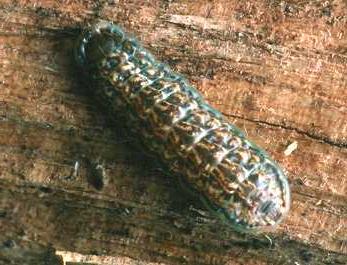
(Photo: courtesy of
Dave Britton, Australian Museum)

| Small Ant-blue (previously known as Pseudodipsas myrmecophila) LUCIINI, THECLINAE, LYCAENIDAE, PAPILIONOIDEA | (donherbisonevans@yahoo.com) and Stella Crossley |

(Photo: courtesy of
Dave Britton, Australian Museum)
These Caterpillars appear to feed by sucking the juices from ant larvae and pupae, living in the nests of :
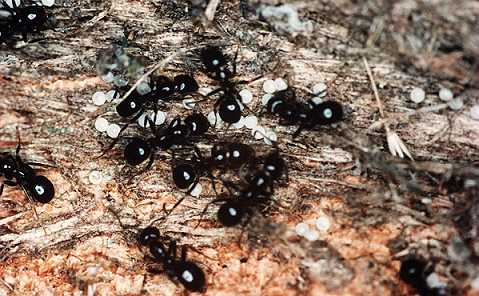
The eggs white, mandarin-shaped, and have a height of about 0.6 mm. They are laid in batches of about 50 near an ant nest at the base of a tree or stump. The ants then appear to extend the nest to cover them. It is possible that the ants also actually feed the Caterpillars. The caterpillars are initially white with black heads and a dark dorsal band. Later they become brown with green and white markings, and have a little knob on the tail. They grow to a length of about 2 cms.
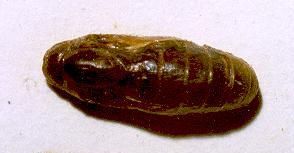
The caterpillars crawl into a crevice in or near the ant nest in order to pupate. The pupa has a length of about 1 cm.
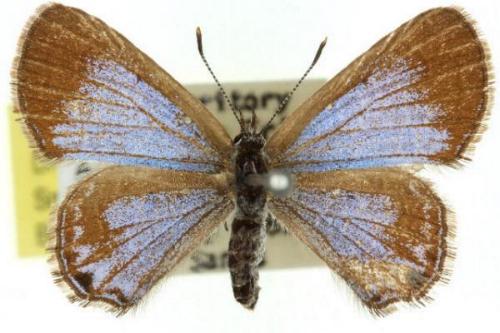
The upper surfaces of the wings of the female adults are dark brown with a large iridescent blue patch in the middle of each wing. The females have a wingspan of about 2.5 cms.
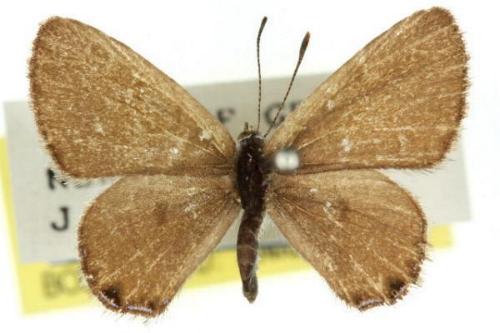
The males are slightly smaller, having a wingspan of about 2 cms. They are similar in colour to the females, with dark brown on top, but with no blue patch.
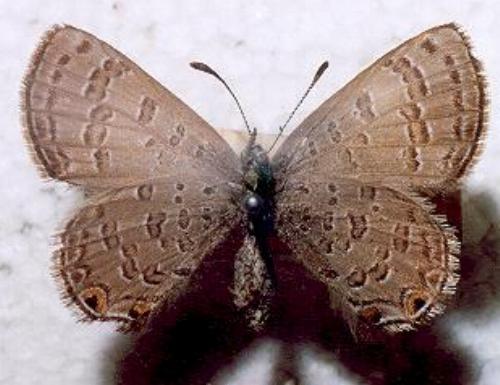
The undersurfaces of both sexes are similar: fawn with brown spots edged with white, and with two black and orange spots by the trailing edge of each hind wing.
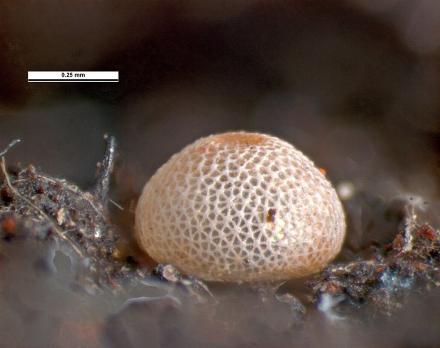
The eggs are brown, and shaped like partly squashed spheres, covered with a dense network of pale ribs. The diameter an egg is about 0.8 mm.
The species occurs in
The conservation of this species has been the subject of study by David Britton and Tim New.
Further reading :
Michael F. Braby,
Butterflies of Australia,
CSIRO Publishing, Melbourne 2000, vol. 2, pp. 634-635.
Gustavus Athol Waterhouse & George Lyell,
Description of a new Lycaenid butterfly, with notes upon its life-history,
The Victorian Naturalist,
Volume 29 (1913), pp. 158-159.
 caterpillar |  butterflies |  Lepidoptera |  moths |  caterpillar |
(updated 24 May 2009, 17 March 2025)